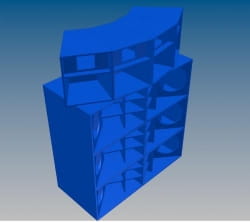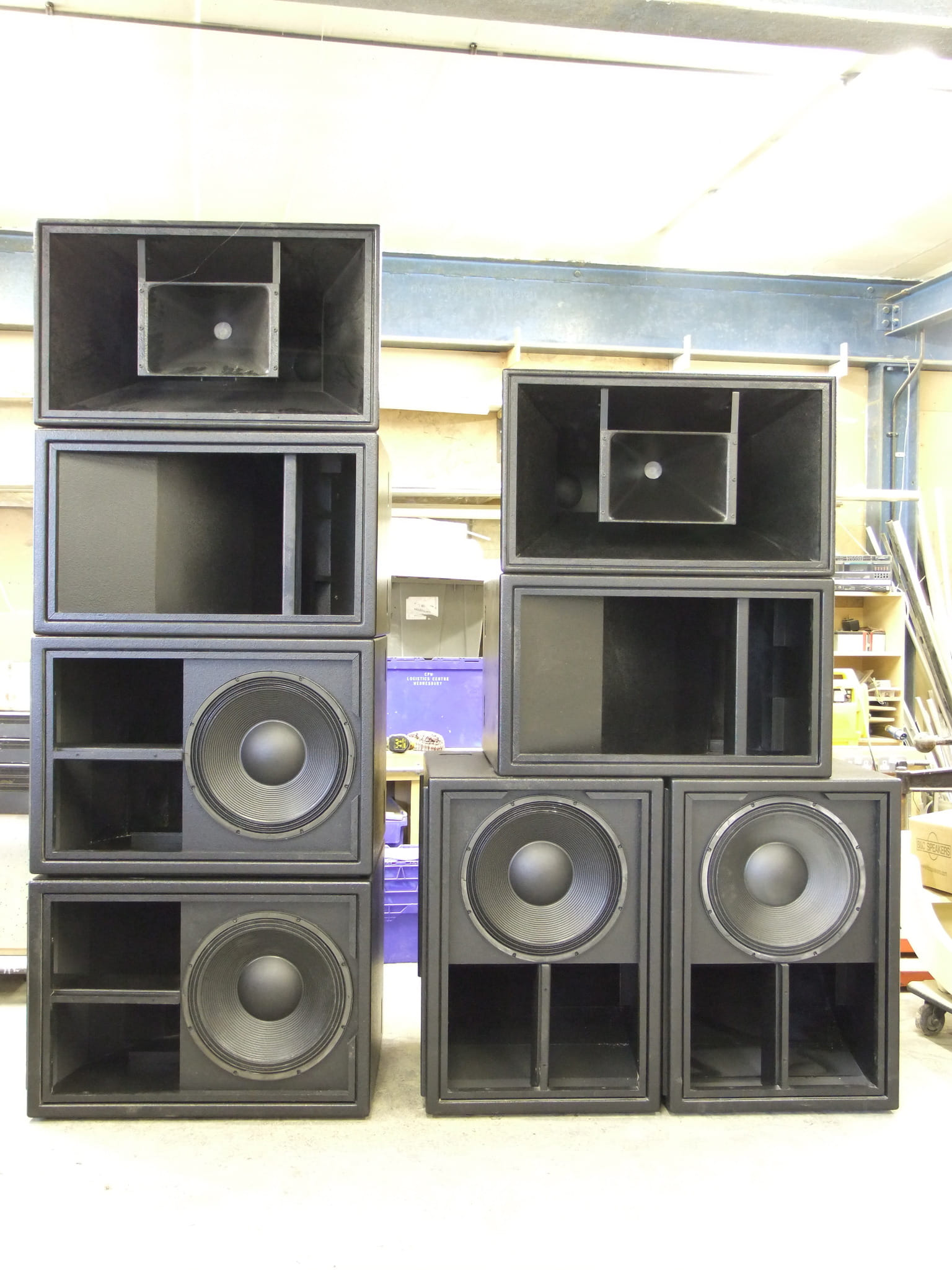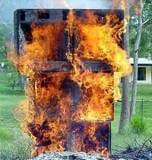- Posts: 397
- Thank you received: 0
Tricks of the trade - vocals
- heathrow_b_line
-
 Topic Author
Topic Author
- Offline
- Platinum Member
-

Less
More
15 years 10 months ago #7451
by heathrow_b_line
Produce a killer sound. Take no prisoners.
Tricks of the trade - vocals was created by heathrow_b_line
How do you make vocals sund stunning through a PA system
Any little tricks for mic selection, mic positioning, rack processing and eq profiles would be helpful plz!
C'mon Chris with all your Dire Straights stuff you must have some pointers for a noob like me
Any little tricks for mic selection, mic positioning, rack processing and eq profiles would be helpful plz!
C'mon Chris with all your Dire Straights stuff you must have some pointers for a noob like me
Produce a killer sound. Take no prisoners.
Please Log in or Create an account to join the conversation.
- tony.a.s.s.
-

- Offline
- Moderator
-

Less
More
- Posts: 1344
- Thank you received: 12
15 years 10 months ago #7461
by tony.a.s.s.
Peace and goodwill to all speaker builders
Replied by tony.a.s.s. on topic Tricks of the trade - vocals
Good engineering, Good ones can make an average system sound good. I have known and been along side some of the best in this country, and the brand of equipment wasn't that important.
Too many people expect the speakers to make it happen, and they don't. In the past I have built a system solely for vocals that was placed in the middle of a big system, The only thing that run through the line was one voice from the mic to the speakers. You would be amazed at what can be achieved with this method, and you would also be surprised at how little the system has to be.
Too many people expect the speakers to make it happen, and they don't. In the past I have built a system solely for vocals that was placed in the middle of a big system, The only thing that run through the line was one voice from the mic to the speakers. You would be amazed at what can be achieved with this method, and you would also be surprised at how little the system has to be.
Peace and goodwill to all speaker builders
Please Log in or Create an account to join the conversation.
- chaudio
-

- Offline
- Platinum Member
-

15 years 10 months ago #7462
by chaudio
Replied by chaudio on topic Tricks of the trade - vocals
I'm assuming you're talking about live bands?
Step 1: Get a decent singer
Step 2: Use a decent mic. My personal current favourites for general live use are the Sennheiser E945 but I've also been getting good results with certain vocalists using an AKG D5.
Mic positioning is difficult to have any control over, the singer will determine that. Some can be coached, some can't.
If you came to one of my live shows you would be amazed how little work I do to vocals or anything to be honest. My main system runs with one point of parametric EQ (not entirely necessary) and one high shelf for CD horn compensation. I quite often don't need to do anything else to the FOH EQ, unless the room is a real problem. For vocals, if you've chosen the right mic, all you usually need to do is a high pass filter around 100Hz, sometimes higher and in most cases you'll need to put a dip in between 150-250Hz of a few dB to tame the high end of the proximity effect. Eg. for an SM58 it's at the lower end, bit below 200Hz, for a Beta58 it's around 250Hz. And that's it.
If the vocalist has a lot of dynamics then some compression might be necessary. I wouldn't use any more than a 3:1 ratio, medium attack eg 50ms, medium release eg 500ms and unless the singer is really going for it, you shouldn't be seeing more than about 6dB of gain reduction.
You might want to add some effects, probably reverb and delay if the style of music requires it. It should be subtle, if the effect is really obvious you're probably using too much. For reverb you probably can't go wrong with a medium sized Hall, 2sec decay time. Delays are a whole different thing. I'm only really getting into using them properly now and I've been engineering professionally for about 8 years.
The most important thing is the system you're running through. Many will disagree with this but a system designed and set up for dance music, ie playback won't necessarily sound right for live music. You need the presence in the midrange which will often get EQ'd out for playback in order to give a smoother sound but is needed for the intelligibility of vocals.
Oh, and don't forget a decent set of ears.
Step 1: Get a decent singer
Step 2: Use a decent mic. My personal current favourites for general live use are the Sennheiser E945 but I've also been getting good results with certain vocalists using an AKG D5.
Mic positioning is difficult to have any control over, the singer will determine that. Some can be coached, some can't.
If you came to one of my live shows you would be amazed how little work I do to vocals or anything to be honest. My main system runs with one point of parametric EQ (not entirely necessary) and one high shelf for CD horn compensation. I quite often don't need to do anything else to the FOH EQ, unless the room is a real problem. For vocals, if you've chosen the right mic, all you usually need to do is a high pass filter around 100Hz, sometimes higher and in most cases you'll need to put a dip in between 150-250Hz of a few dB to tame the high end of the proximity effect. Eg. for an SM58 it's at the lower end, bit below 200Hz, for a Beta58 it's around 250Hz. And that's it.
If the vocalist has a lot of dynamics then some compression might be necessary. I wouldn't use any more than a 3:1 ratio, medium attack eg 50ms, medium release eg 500ms and unless the singer is really going for it, you shouldn't be seeing more than about 6dB of gain reduction.
You might want to add some effects, probably reverb and delay if the style of music requires it. It should be subtle, if the effect is really obvious you're probably using too much. For reverb you probably can't go wrong with a medium sized Hall, 2sec decay time. Delays are a whole different thing. I'm only really getting into using them properly now and I've been engineering professionally for about 8 years.
The most important thing is the system you're running through. Many will disagree with this but a system designed and set up for dance music, ie playback won't necessarily sound right for live music. You need the presence in the midrange which will often get EQ'd out for playback in order to give a smoother sound but is needed for the intelligibility of vocals.
Oh, and don't forget a decent set of ears.
Please Log in or Create an account to join the conversation.
- burningbushhifi
-

- Offline
- New Member
-

Less
More
- Posts: 8
- Thank you received: 0
15 years 10 months ago #7466
by burningbushhifi
Replied by burningbushhifi on topic Tricks of the trade - vocals
For vocals, if you've chosen the right mic, all you usually need to do is a high pass filter around 100Hz, sometimes higher and in most cases you'll need to put a dip in between 150-250Hz of a few dB to tame the high end of the proximity effect. Eg. for an SM58 it's at the lower end, bit below 200Hz, for a Beta58 it's around 250Hz.
+1 on this, the rest is getting clarity from the room acoustics.
+1 on this, the rest is getting clarity from the room acoustics.
Please Log in or Create an account to join the conversation.
- vincec
-

- Offline
- New Member
-

15 years 10 months ago #7473
by vincec
Replied by vincec on topic Tricks of the trade - vocals
I'd totally agree with Chris - sometimes you find yourself trying to EQ a less-than-brilliant voice out of the cardboard box it appears to be in, and then you hear a voice that naturally cuts through everything and doesn't need any help at all.
Mic-wise, my default weapon of choice is a Beta58, but I have an EV RE410 condenser which is sublime, particularly in a quieter, acoustic style mix. If you want cheaper mics that you won't cry over if they get spiked, try the LD Systems D1001. In my humble opinon they are nicer than an SM58 - brighter in the mid/top, but half the price.
I tend to take out a bit around 400-500Hz to avoid some boxiness, particularly if you are doing battle with a high db drummer and guitar amps set on stun. In that situation I am trying to achieve clarity and cut through, generally at the expense of faithful reproduction of the source voice.
I also agree with Tony - a good engineer can eq the system to sound good before even touching the desk. I would argue that the amount of main eq tweaking is in direct proprtion to the quality of the system, but once you have made the appropriate compensation, the channel eq is for fine-tuning only.
Cheers, Vince
Mic-wise, my default weapon of choice is a Beta58, but I have an EV RE410 condenser which is sublime, particularly in a quieter, acoustic style mix. If you want cheaper mics that you won't cry over if they get spiked, try the LD Systems D1001. In my humble opinon they are nicer than an SM58 - brighter in the mid/top, but half the price.
I tend to take out a bit around 400-500Hz to avoid some boxiness, particularly if you are doing battle with a high db drummer and guitar amps set on stun. In that situation I am trying to achieve clarity and cut through, generally at the expense of faithful reproduction of the source voice.
I also agree with Tony - a good engineer can eq the system to sound good before even touching the desk. I would argue that the amount of main eq tweaking is in direct proprtion to the quality of the system, but once you have made the appropriate compensation, the channel eq is for fine-tuning only.
Cheers, Vince
Please Log in or Create an account to join the conversation.
- chaudio
-

- Offline
- Platinum Member
-

15 years 10 months ago #7476
by chaudio
Replied by chaudio on topic Tricks of the trade - vocals
I use Beta58's a lot because of their industry standard status but I only own one and avoid using it unless I have to.
Please Log in or Create an account to join the conversation.
Time to create page: 0.289 seconds